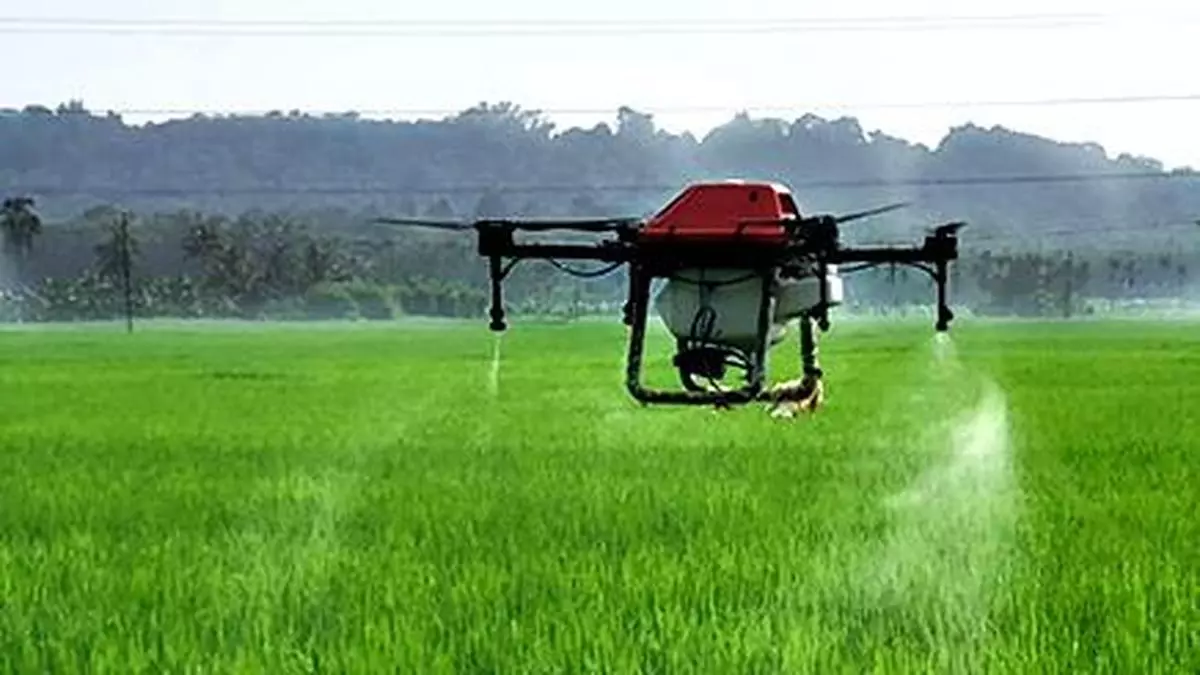Can drones propel Indian agriculture to new heights?
Agriculture remains pivotal to India’s economy, sustaining millions while feeding a burgeoning population. Yet, to keep pace with global advancements, our agricultural sector must embrace technological innovation without sidelining the tireless efforts of our farmers.
In recent years, drones have emerged as a transformative force with immense potential to revolutionize rural agriculture in India. This technology offers promising avenues to enhance productivity, efficiency, and profitability across the sector. Notably, the Indian Council of Agricultural Research (ICAR) has established a Centre for Precision and Farming Technologies, focusing on the integration of precision agriculture technologies, including drones.
Challenges of adopting drone technology in agriculture
While drones offer many benefits to farmers, some challenges may be holding farmers back from adopting this technology. Here are some of the key challenges:
· Fear of job loss: Many farmers are concerned that the adoption of drone technology will lead to job loss, as fewer workers will be needed to perform manual labour on the farm.
· Lack of knowledge and training: Farmers may need to gain the knowledge or training necessary to operate drones effectively. This can make it difficult for them to adopt this technology, as they may need more confidence in their ability to use it.
· Cost: Drones can be expensive, and many farmers may need more financial resources to invest in this technology.
· Regulatory barriers: Regulatory barriers to the use of drones in agriculture make it difficult for farmers to adopt this technology.
While these challenges persist, government initiatives like the production-linked incentive (PLI) programme are pivotal in transforming India into a global drone manufacturing hub by 2030. Programs such as “Drone Didi” and subsidies for nano soil nutrient spraying underscore India’s commitment to harnessing drone technology for agricultural prosperity.
Benefits of drone technology
Drones can cover large areas of land quickly and efficiently, allowing farmers to gather data and monitor crops more effectively. The other advantages of using drones include:
· Precision crop monitoring: Drones equipped with multispectral or thermal cameras can capture high-resolution aerial imagery of crops, allowing farmers to monitor crop health and assess field variability with greater accuracy and efficiency than traditional methods.
· Resource management: By analysing aerial imagery and data collected by drones, farmers can optimize resource use, including water, fertilizers, and pesticides, reducing waste, minimizing environmental impact, and maximizing yields.
· Crop scouting and pest management: Drones enable farmers to conduct rapid and targeted crop scouting missions, identifying pest infestations, weed outbreaks, and other crop health issues early on, allowing for timely interventions and more effective pest management strategies.
· Mapping and surveying: Drones equipped with GPS and mapping software can create detailed maps and 3D models of farmland, helping farmers optimize and plan – planting, irrigation, and drainage systems and monitor soil erosion and land degradation.
· Disaster response and risk assessment: In the event of natural disasters such as floods, droughts, or storms, drones can be deployed for rapid assessment and response. They can provide real-time situational awareness, assess damage to crops and infrastructure, and aid in disaster recovery efforts.
Government support, like the Sub-Mission on Agricultural Mechanization (SMAM), further amplifies these benefits. Investments in initiatives promoting Kisan drones for precise applications like pesticide spraying exemplify efforts to boost productivity and resource efficiency.
In conclusion, the integration of drone technology stands poised to revolutionise Indian agriculture, optimising crop management, reducing chemical usage, and increasing yields. Collaboration between farmers and policymakers is crucial to addressing challenges and maximising the sector’s potential for sustainable and profitable growth.
The author is Co-Founder & CEO, Thanos Technologies
